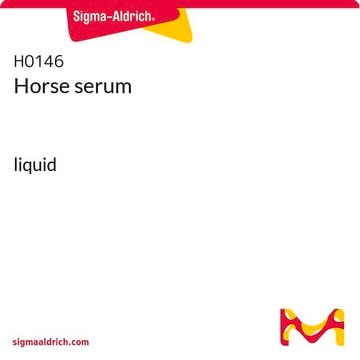380R-1
Arginase-1 (SP156) Rabbit Monoclonal Antibody
About This Item
Polecane produkty
pochodzenie biologiczne
rabbit
Poziom jakości
100
500
białko sprzężone
unconjugated
forma przeciwciała
culture supernatant
rodzaj przeciwciała
primary antibodies
klon
SP156, monoclonal
opis
For In Vitro Diagnostic Use in Select Regions (See Chart)
Postać
buffered aqueous solution
reaktywność gatunkowa
human
opakowanie
vial of 0.1 mL concentrate (380R-14)
vial of 0.5 mL concentrate (380R-15)
bottle of 1.0 mL predilute (380R-17)
vial of 1.0 mL concentrate (380R-16)
bottle of 7.0 mL predilute (380R-18)
producent / nazwa handlowa
Cell Marque™
metody
immunohistochemistry (formalin-fixed, paraffin-embedded sections): 1:25-1:100
izotyp
IgG
kontrola
hepatocellular carcinoma, normal liver
Warunki transportu
wet ice
temp. przechowywania
2-8°C
wizualizacja
cytoplasmic, nuclear
informacje o genach
human ... ARG1(383)
Opis ogólny
Jakość
 IVD |  IVD |  IVD |  RUO |
Powiązanie
Postać fizyczna
Uwaga dotycząca przygotowania
Inne uwagi
Informacje prawne
Not finding the right product?
Try our Narzędzie selektora produktów.
Certyfikaty analizy (CoA)
Poszukaj Certyfikaty analizy (CoA), wpisując numer partii/serii produktów. Numery serii i partii można znaleźć na etykiecie produktu po słowach „seria” lub „partia”.
Masz już ten produkt?
Dokumenty związane z niedawno zakupionymi produktami zostały zamieszczone w Bibliotece dokumentów.
Nasz zespół naukowców ma doświadczenie we wszystkich obszarach badań, w tym w naukach przyrodniczych, materiałoznawstwie, syntezie chemicznej, chromatografii, analityce i wielu innych dziedzinach.
Skontaktuj się z zespołem ds. pomocy technicznej







